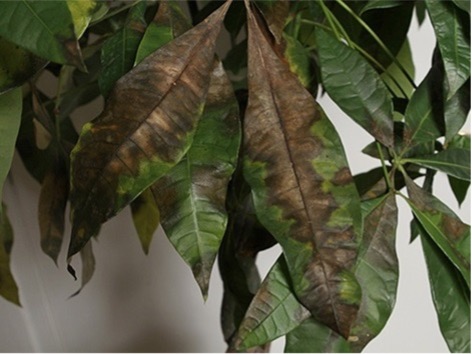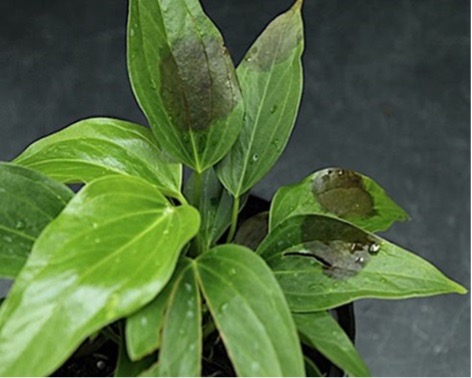Phytophthora Diseases Affecting Ornamentals and the Potential for Foliar Outbreaks
Phytophthora diseases in ornamentals can lead to potential foliar outbreaks according to research and surveys conducted over the past decade. Diagnosticians who routinely receive ornamental disease samples say foliar outbreaks of Phytophthora remain a persistent issue.
What is Phytophthora?
Species of Phytophthora are present in all ornamental nurseries and have the potential to cause significant disease of great economic importance. Phytophthora is routinely introduced into greenhouses and nurseries through contaminated stock plants, contaminated media and contaminated irrigation water. Once introduced, inoculum of the pathogen can spread by splashing irrigation water and through cultural practices such as potting, pruning and the movement of plant material.
The discovery of Phytophthora ramorum causing a serious disease on oak and other tree species in Western U.S. nurseries set the stage for numerous Phytophthora studies. A review of the literature on Phytophthora species associated with ornamental plants reveals that numerous species are reported. With an increase of scientists developing more specific and sensitive detection methods, we will likely see the reports of Phytophthora species affecting ornamental production continue to rise. Based on crop type (i.e., tropical foliage, bedding plants, woody ornamentals) and geographic location, the Phytophthora species present can widely vary. For example, there are six species of Phytophthora reported on tropical foliage, with Phytophthora nicotianae among the most common to cause foliar outbreaks. More than a dozen Phytophthora species have been reported associated with foliar diseases of woody ornamentals, with Phytophthora citricola among the most common.
What you need to know
It’s crucial growers understand the detection of Phytophthora in and among their plants. The inoculum of this pathogen, capable of causing root rot as well as foliar diseases, increases from low (even levels so low they are undetectable) to high levels within a few days, depending on the conditions. The increase of inoculum is caused by the rapid production of sporangia and zoospores from infected plant tissues when free moisture is present.
Phytophthora has a short generation time and great reproductive capacity that often leads to disease outbreaks in a short period of time. (Sometimes, it seems the disease can turn on overnight.) The presence of free moisture and the leaf wetness period are the most important environmental factors associated with foliar outbreaks of Phytophthora. Leaf wetness is the presence of free water on the surface of a plant leaf that results from overhead irrigation, rainfall, fog or dew, which can form on any surface of the plant, mainly on the top and bottom sides of the leaves. Thus, irrigation practices to minimize leaf wetness and proper plant spacing to allow for air movement through the canopy are important disease management strategies for controlling foliar outbreaks of Phytophthora.
Severe foliar blight of Pachira aquatica (money tree) caused by Phytophthora palmivora.
Mandevilla leaves with brown to black spots and water-soaked margins caused by Phytophthora nicotianae.
Disease development is most often favored by hot, wet weather typical of our summer months. Plants that are watered using overhead irrigation and maintained under conditions where the leaves won’t dry are most prone to foliar outbreaks caused by Phytophthora. Several fungicides have been developed for use on ornamentals infected with Phytophthora. These include etridiazole (FRAC 14), mefenoxam (FRAC 4), fenamidone (FRAC 11), propamocarb (FRAC 28) and fosetyl aluminum (FRAC 33). More recent fungicides include cyazofamid (FRAC 21), dimethomorph and mandipropamid (FRAC 40), fluopicolide (FRAC 43), and oxathiapiprolin (FRAC U15). Each of these compounds has demonstrated excellent activity for controlling Phytophthora in ornamental production settings. When it comes to effective management of aggressive pathogens such as Phytophthora, preventive fungicide applications are a must. When applying any pesticide, always refer to the manufacturer’s label for recommended rates and application intervals as the label is the law.
Early symptoms of foliar blight on Anthurium caused by Phytopthora nicotianae.
Article originally published in GrowerTalks, 6/30/2017.



